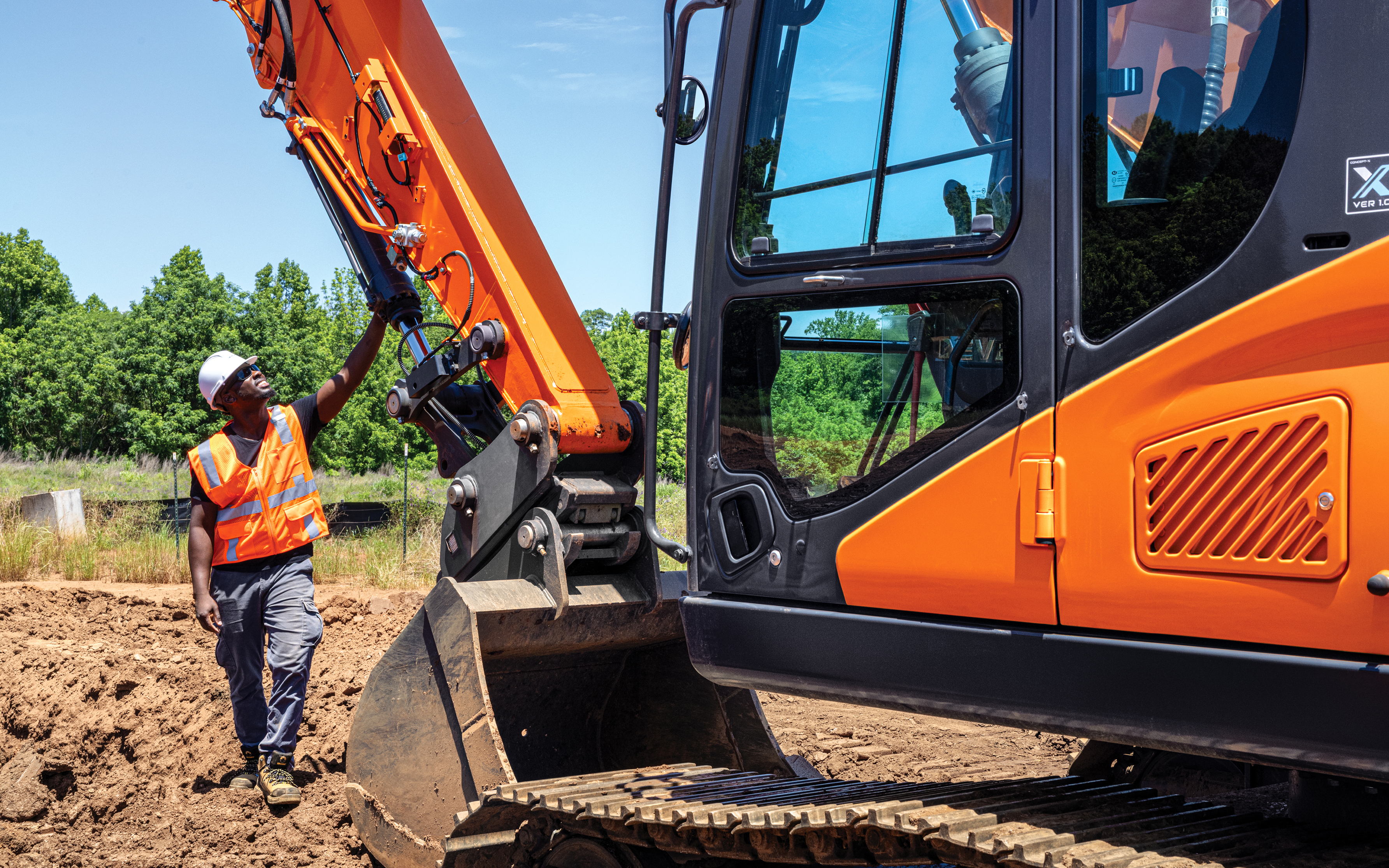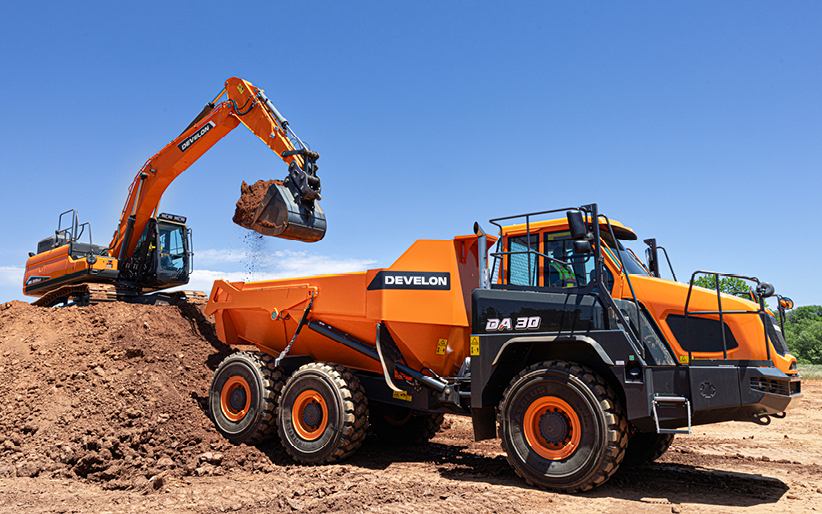Leave the wheelbarrows and shovels behind: Mini excavators are the new standard for residential landscaping projects.
Mini excavators, also known as compact excavators, often fit where larger excavation equipment can’t, are lightweight and are more efficient for labor-intensive tasks traditionally done by hand.
Choose from various sizes and configurations of compact (mini) excavators, like zero tail swing, reduced tail swing or conventional tail swing models, to match your household project needs. And consider tracks or wheels that align with your surfaces, such as concrete or pavers. Get advice on choosing the best mini excavator for your next project.
You can enhance your productivity even further with a range of attachments available for mini excavators.
Some mini excavators, like our new DX17Z-7, come standard with retractable tracks and a collapsible dozer blade for reaching and traveling through especially tight spaces. Expand the tracks and widen the dozer blade when you’re ready to work to enhance the machine’s stability and performance.
See how you can master tasks like trenching, digging holes, backfilling, grading and lifting with a mini excavator and attachments.
Dig Trenches and Holes
Common trenching tasks to install new drainage or irrigation systems for a backyard household project can be performed more efficiently with a mini-sized excavator and a bucket. For these types of tasks, precision is crucial. It’s essential to match the correct bucket and mini excavator for the proper width and digging depth.
Whether you’re digging for a new pond, creating holes for new fence posts, or planting trees, a mini excavator is a game-changer for its versatility and precision.
Before you dig, always contact your local one call service to identify any underground utilities, such as sewer lines.
Backfill Trenches
When you’re finished trenching, it’s time to backfill the trench. Using a mini excavator dozer backfill blade speeds up this task compared to using manual labor.
Lower the dozer blade and push the dirt into the trench. You can raise and lower the dozer blade using the blade control lever.
Backfill trenches in layers to ensure uniform stability. Begin by partially filling the trench with loose soil, then use the mini excavator’s dozer blade to spread and compact the soil evenly. Proper compaction is important to enhance stability, improve drainage and promote optimal load-bearing capacity.
Some mini excavator models, like our DX42-7, are available with a four-way angle blade. The angle blade tilts and turns for more efficient backfilling.
Grade Surfaces
Your mini excavator’s dozer blade is also an ideal tool for residential landscape grading. Adjust the dozer blade to match your desired slope or grade.
Before you start grading an area, use the mini excavator bucket to clear debris. A bucket paired with a thumb attachment is an excellent combination for grabbing and lifting objects with a mini excavator.
Once the area is prepared for grading, lower the dozer blade to the ground. Slowly advance the mini excavator forward, pushing the material ahead of the blade.
You may need to fine-tune the angle and depth of your mini excavator’s dozer blade to achieve your desired slope or contour.
After your initial grading, make additional passes to smooth out any bumps or ridges. This will help ensure a level surface. You can get more sophisticated with a laser or GPS guidance system, but you probably won’t need these tools for a residential project.
When you’re done grading, the next step is compacting the soil to prevent settling and erosion. Plate compactor attachments are available for mini excavators, or you can use the bucket to tamp down the soil.
Lift Objects
Mini excavators are popular for material handling, especially on residential projects. This is often because larger machines can’t access the area, and some objects may be too heavy for you to lift by hand. Mini excavators provide the power to lift the heavy items, making your work easier.
If you’re doing demolition as part of a residential project, you can rent a hydraulic breaker attachment for such tasks as knocking down small structures or removing old concrete patios. Switch to the bucket and thumb to lift and move the broken concrete and remove debris from the construction site.
A hydraulic quick coupler is an ideal accessory to speed up attachment changes. You can switch non-hydraulic attachments without leaving the cab, saving you valuable time on your projects.
Learn more about our versatile machines, like the DX17Z-7, as well as our full line of mini excavator models. And get advice for renting mini excavators in this blog post.

By Andy Jeong, Products and Parts Engineer
Andy Jeong is the mini excavator product manager at DEVELON. He is an experienced production control specialist with a history of working in the automotive industry.



